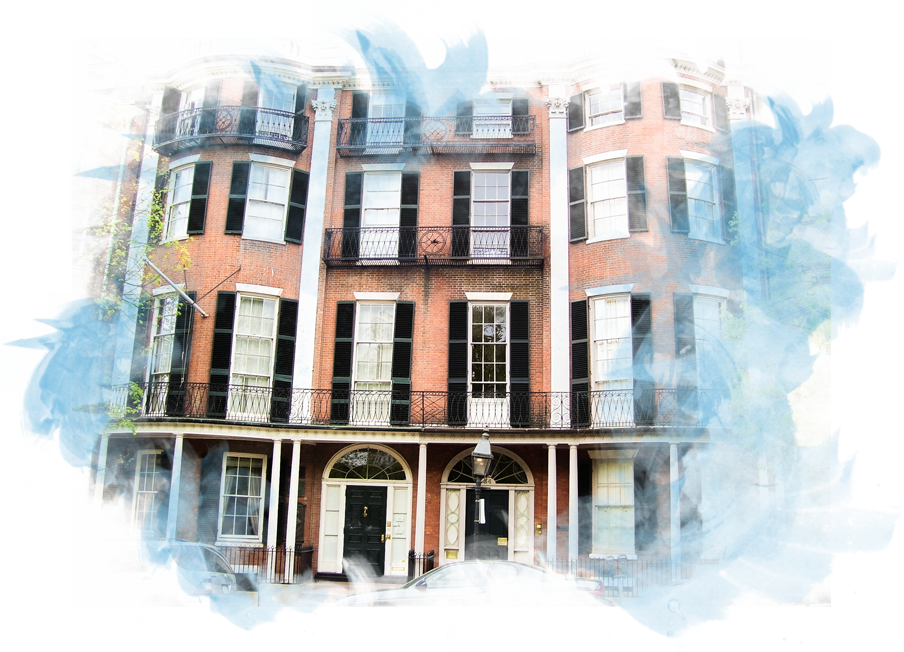
William Hickling Prescott House
History wasn’t just made here, it was written (and filmed) here too. Named for influential historian, William Hickling Prescott, who lived and wrote there, this Federalist-style house on Beacon Hill shows what was life was like for the families who lived here from the early 1800’s through the Gilded Age.
Located on Beacon Hill, Prescott House is a Federal-style townhouse which faces the Boston Common. The house and its owners speak to the history of Boston in the nineteenth century, from the post-Revolution Federal era, to the time when Boston was the intellectual center of America, to the expansion of the city into the Back Bay.
James Smith Colburn commissioned the home at 55 Beacon Street, and the adjoining home at 54 Beacon Street, in 1808. The twin houses overlook Boston Common and are on land purchased from John Singleton Copley, a well-established portrait painter in Colonial New England. Colburn’s father was a “Minute Man” from Lexington, MA, but he made his own fortune exporting housewares from England. Colburn and his wife, Sarah Dunn Prince, hired architect Asher Benjamin to design the home. The Colburns lived in the home from 1808 – 1845.
The American historian, William Hickling Prescott, lived at 55 Beacon Street from 1845-1859. Prescott was one of the first English-speaking historians to write about the Spanish Empire. His books included histories of the Spanish monarchs and the conquests of Mexico and Peru. Some have been translated into several languages and remain in print today. Prescott made major renovations to the house including t a rear addition, which included his extensive library on the second floor, and a third floor study, which was restored by the NSCDA-MA. It was in this study that he wrote his “History of the Conquest of Peru” and “Philip II”.
After Prescott died in 1859, his widow continued to live in the house until her death in 1869, when it was purchased by her nephew, Franklin Gordon Dexter. The Dexter family replaced the original spiral staircase with the present colonial revival staircase, which emphasizes the vast expanse of space between the first and second floor. In 1944, The National Society of The Colonial Dames in The Commonwealth of Massachusetts purchased the house. It was designated a National Historic Landmark in 1964.
In addition to being the headquarters for the NSCDA-MA, Prescott House also hosts the Dame’s costume collection, which features clothing dating from the 18th through the 20th centuries, including dresses, fans, shoes, parasols and children’s clothing — selections of which are on continuous display. The full collection is available to researchers by appointment.